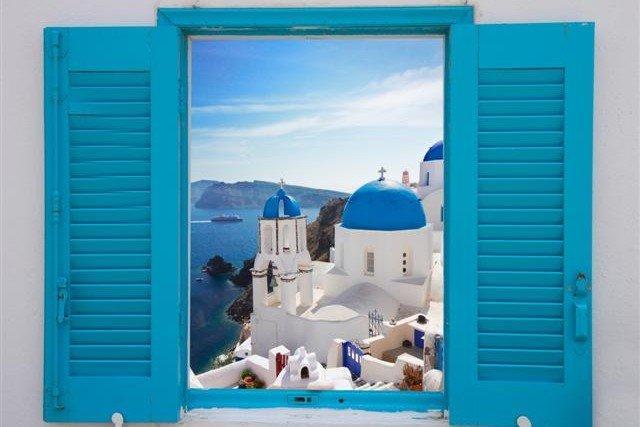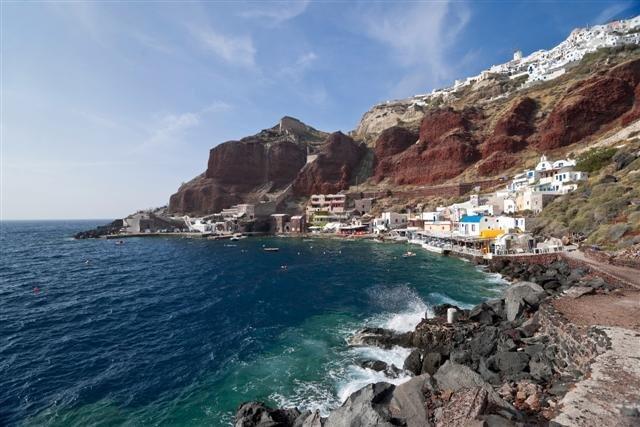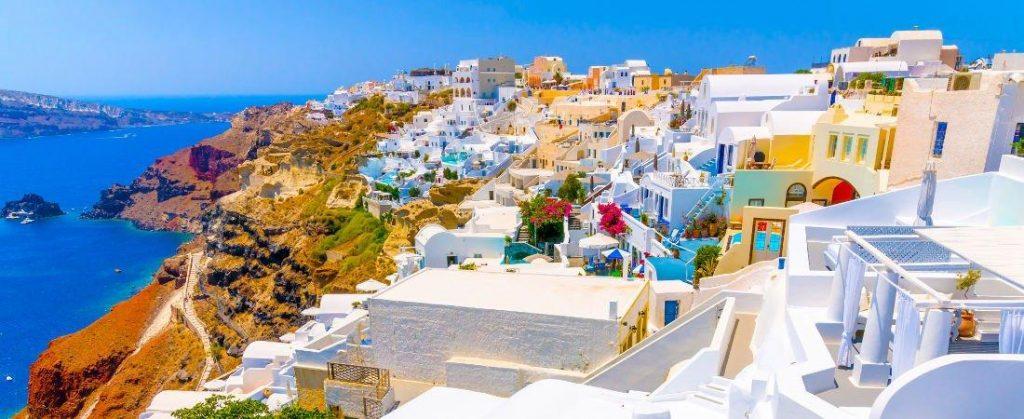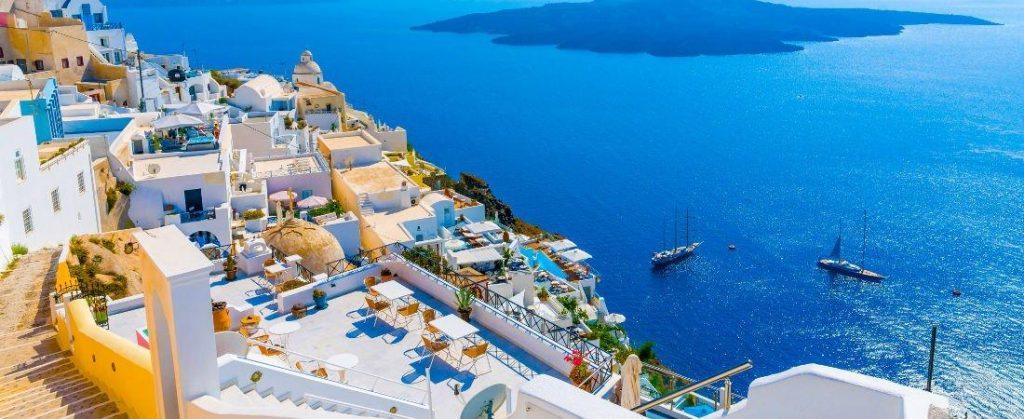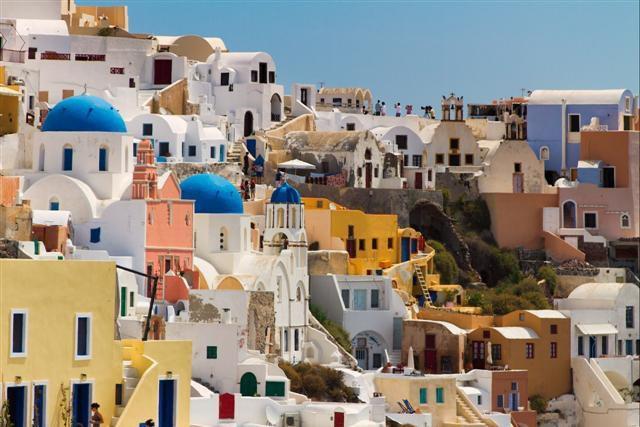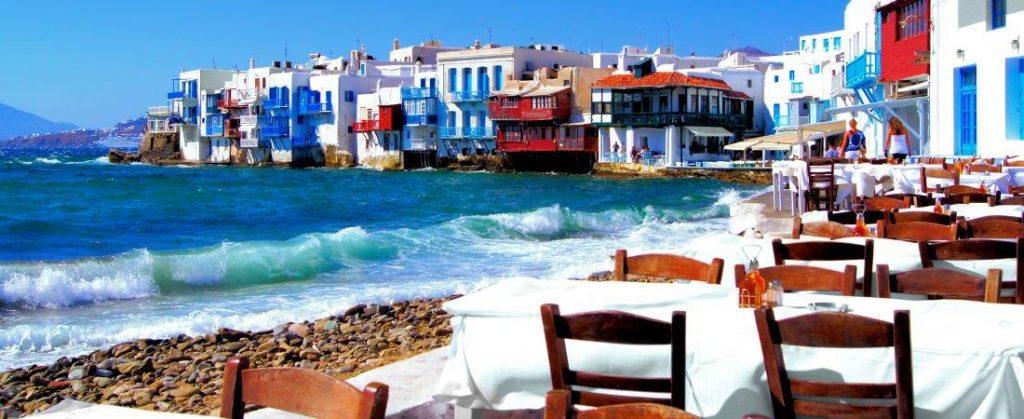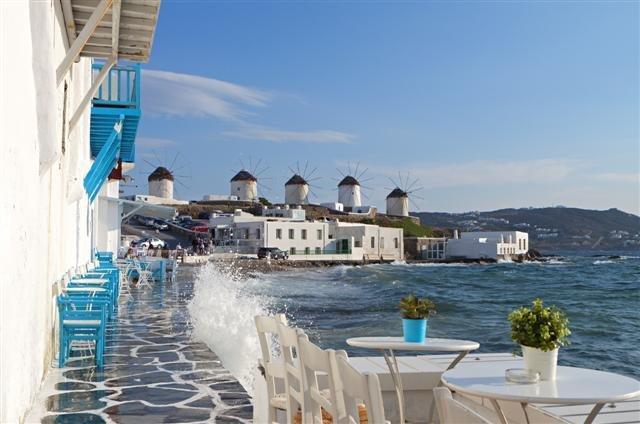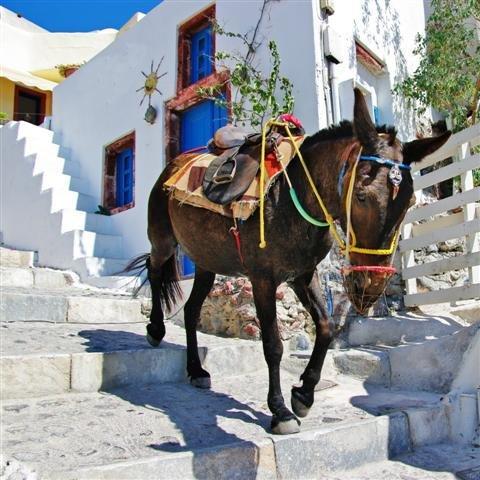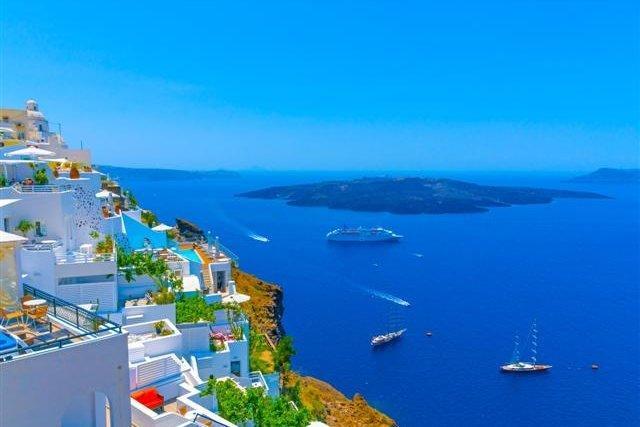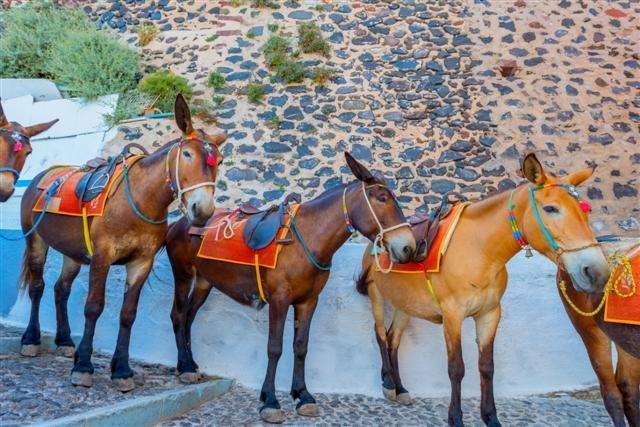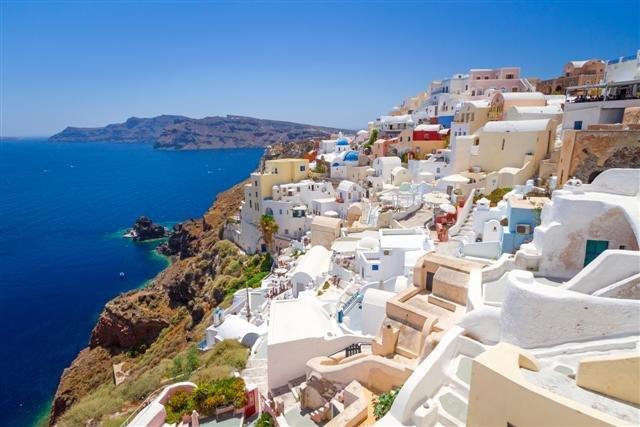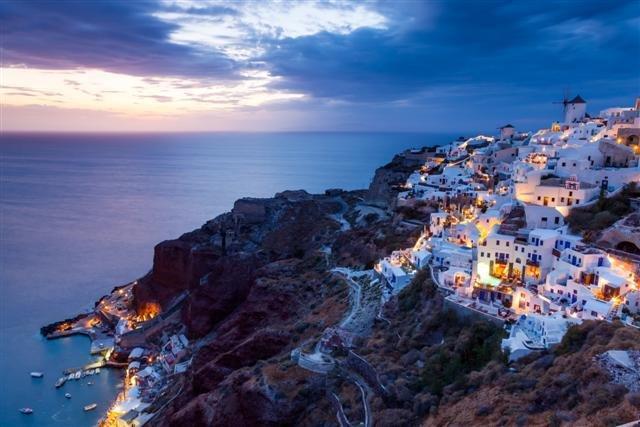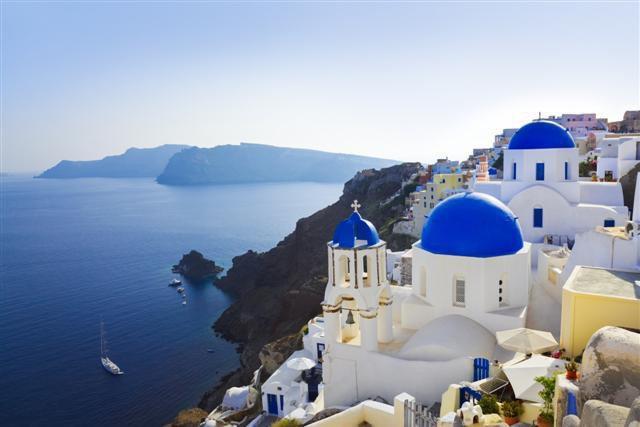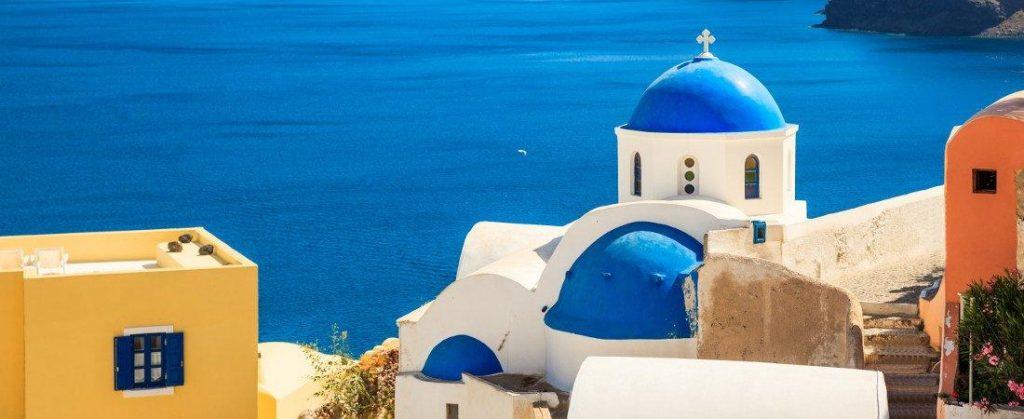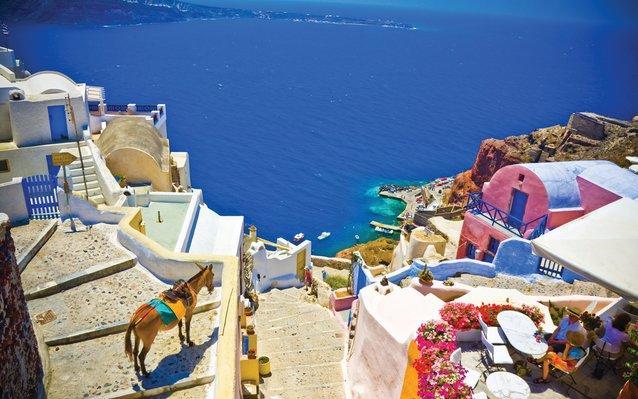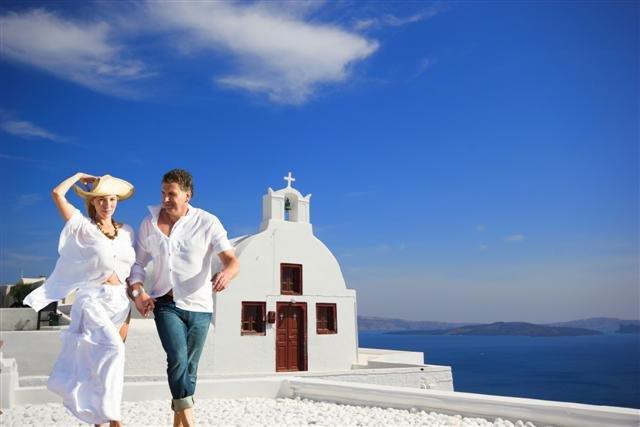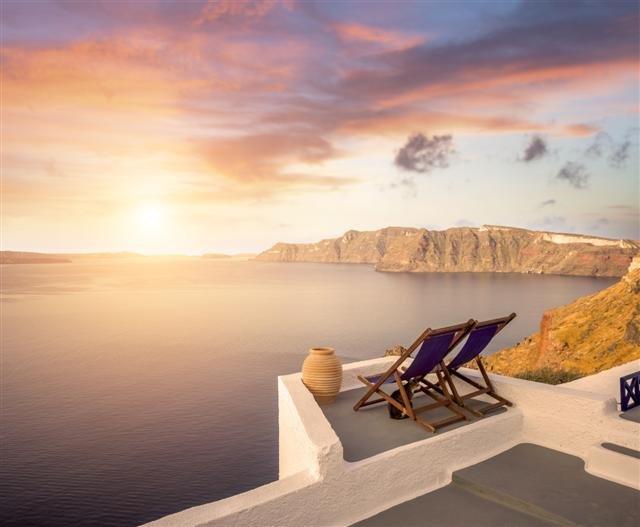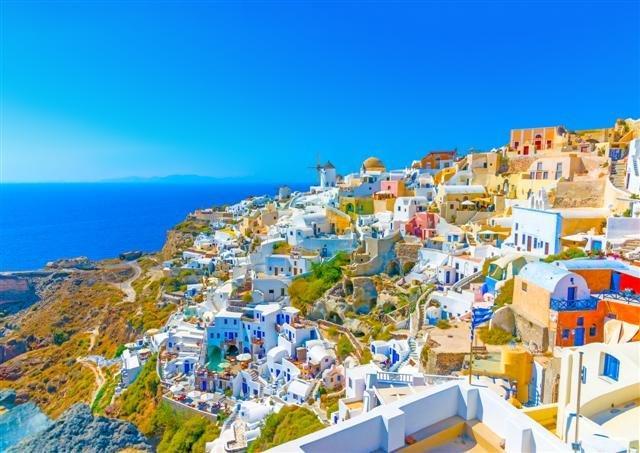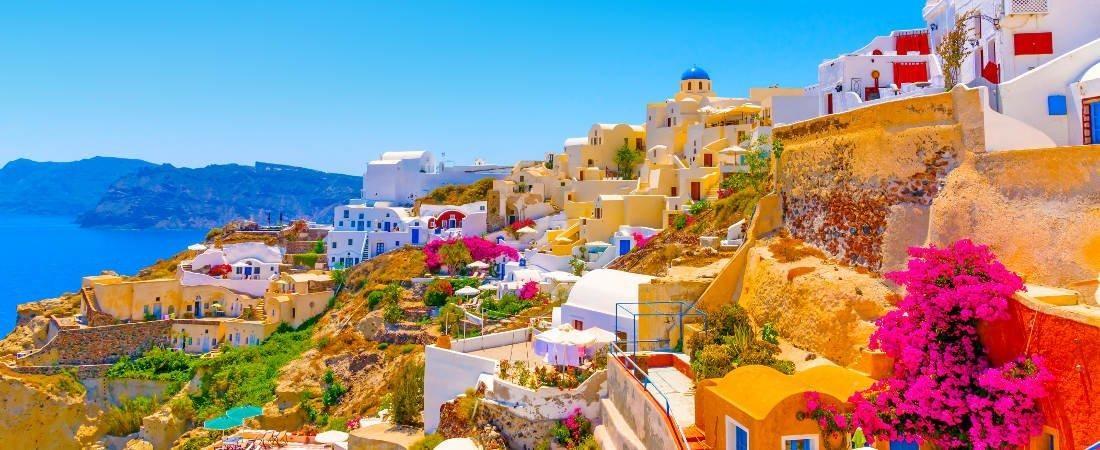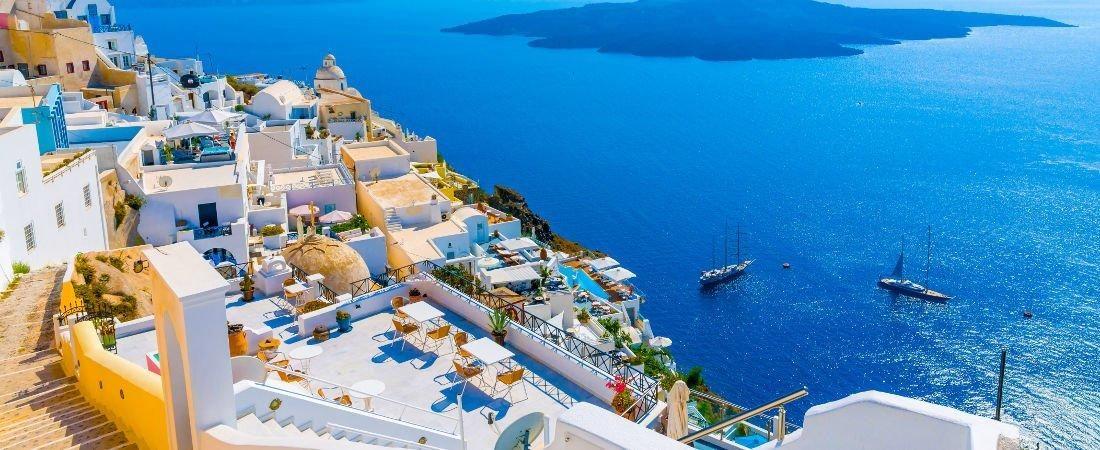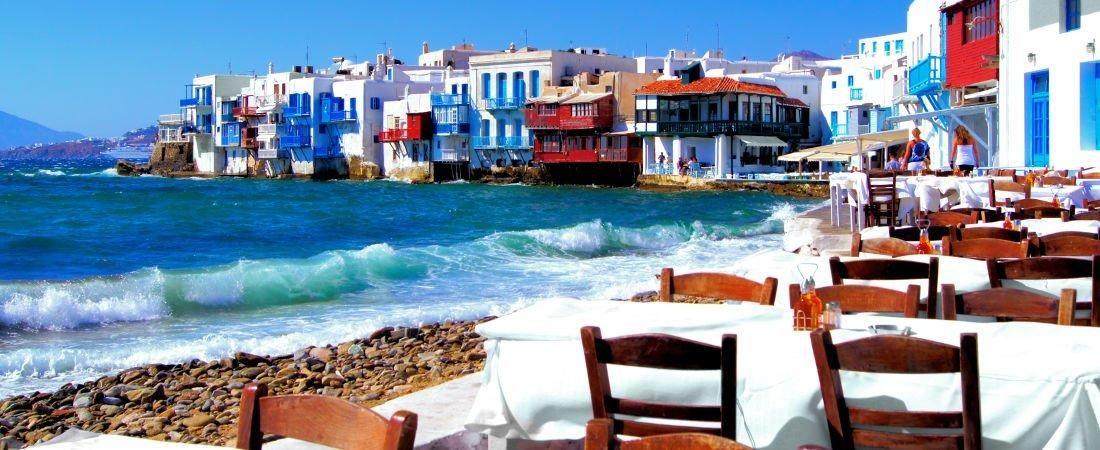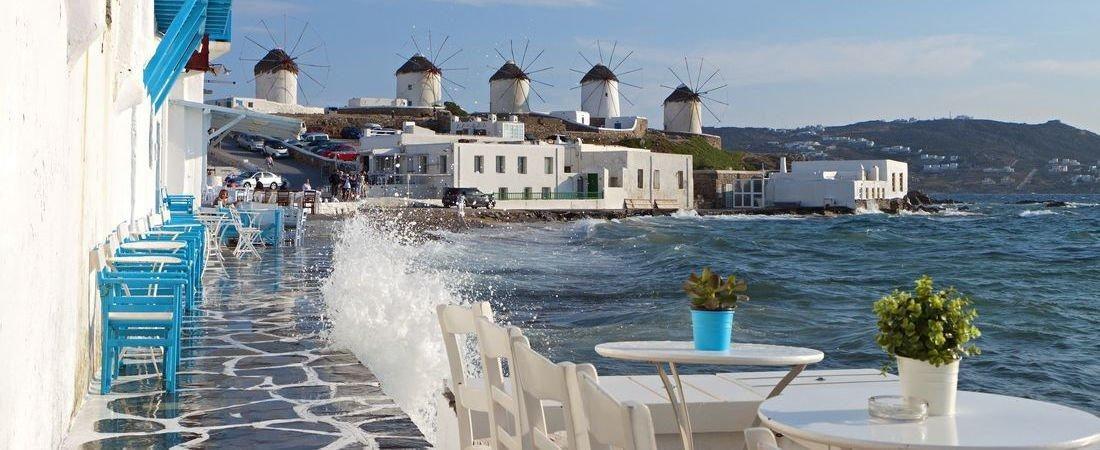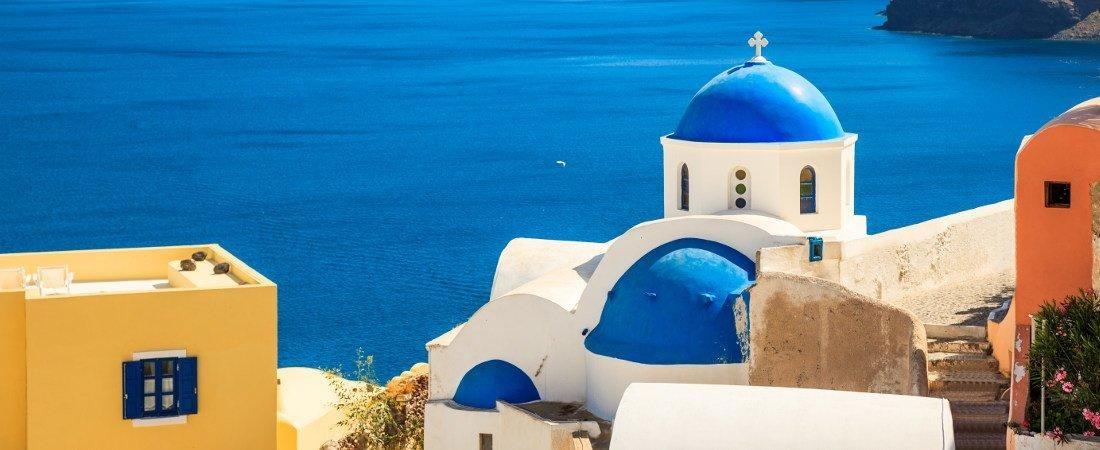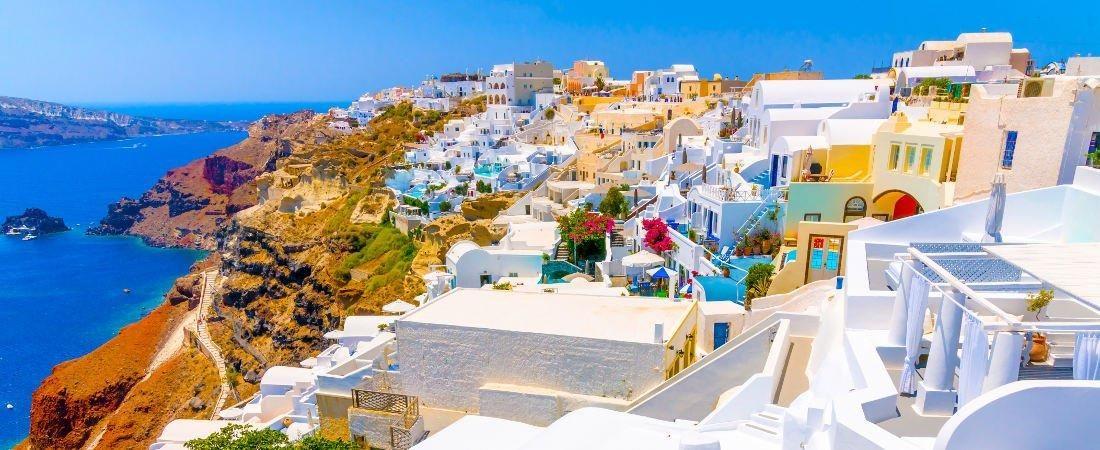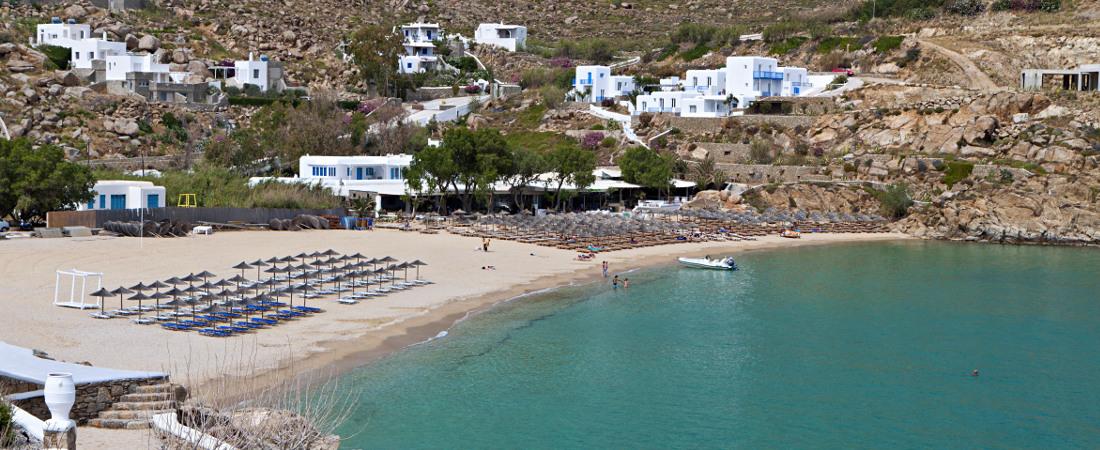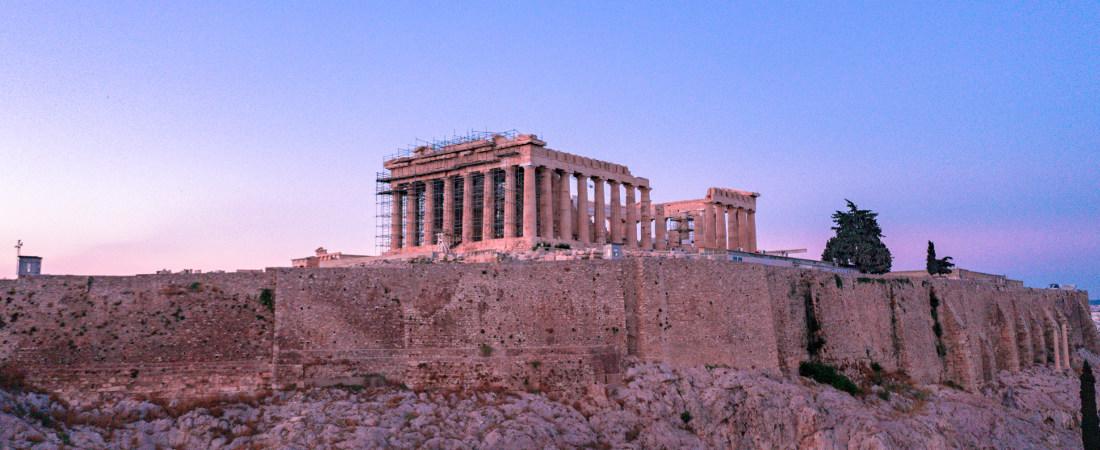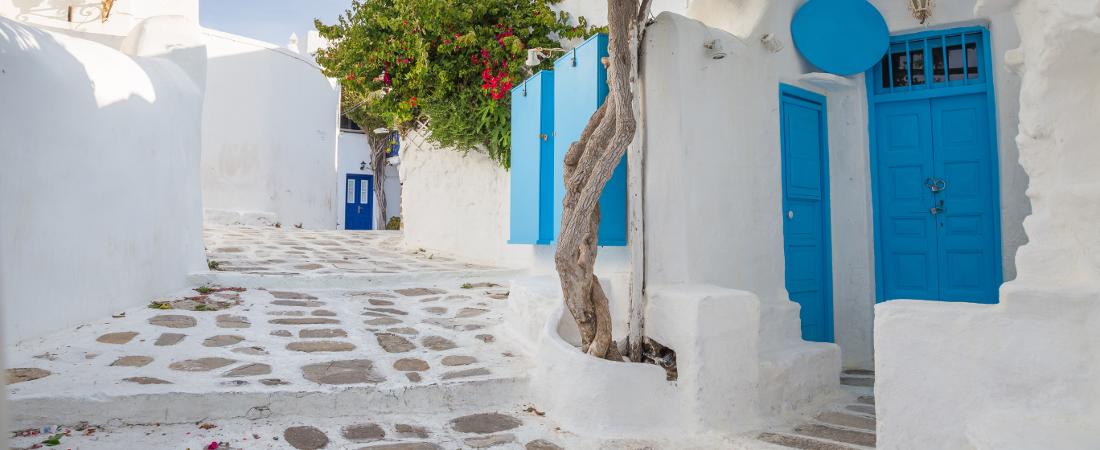Santorini Island is the best known of all the Greek islands.
Visit Santorini with one of our organized island packages.
Santorini is a complex of five islands, Santorini or Thira itself, Thirasia and Aspronisi, then two further volcanic islands, Palea Kameni and Nea Kameni. Originally it was a single island and then around 1640 B.C. a volcanic eruption destroyed the center of the island forming a flooded crater which is now referred to as the Caldera. Later, after a number of further eruptions, two other volcanic islands, Palea Kameni and Nea Kameni were formed.
The volcano is still classed as active.
Fira Town, the islands capital stands atop sheer cliffs some 300 meters high. Below a small port is located, nowadays used almost exclusively by the cruise ships that visit the island with monotonous regularity, and the small tourist boats that pick up and drop off tourists taking excursions to other parts of the island.
To get to and from the port of Fira, the tourist is encouraged to take a mule ride along the steep, zigzagging path. There is also a cable car which is far more comfortable and faster, but a less romantic choice. Thira itself is very attractive, with Whitewashed Houses and Narrow Winding Stepped Streets that lead to a number of Old Marketplaces and Picturesque Churches. The town has also a large selection of Trendy Boutiques and Jewellery Shops. There are superb views from Fira over the Caldera.
Further along the coast from Fira, and again with splendid views of the Caldera, lies the picturesque town of Oia (pronounced Eea). There are winding steps that lead down to what was once a major fishing port. Although many of the houses suffered damage in the 1956 earthquake, many have now been tastefully restored. Some of the houses are built so close together that the courtyards form the roof of their neighbours on the next level down the cliff face. The town becomes very busy during the afternoons when the crowds start to arrive ready to view the sunsets that can be spectacular from here. Oia has two beaches nearby, Amoudi and Armeni, both of which are reached via stepped pathways.
The human presence on Santorini island seems to be existed since the middle of the 3rd millennium B.C. The excavation at Akrotiri has confirmed that man’s activity on the island continues until the eruption of the volcano in around 1500 B.C., which entirely buried the island beneath very thick layers of pozzuolona. All traces of human activity vanished from the island until the end of the 13th century B.C.
According to Herodotus, the island was initially called Strongyle (the Round One). Later, because of its beauty, it was called Kalliste (the Fairest One). To Kalliste, came the Phoenicians and there they settled. After the Phoenicians, the Lacedaemonians arrived and gave the island the name of their leader, Theras.
In the 9th century B.C. Thera, became an important point on the communication route between the East and the West of that era and adopted the Phoenician alphabet for writing the Greek language. In about 630 B.C. Therans reached the north coast of the African continent where they founded Cyrene, the only Theran colony. During the Classical period in Greece (5th and 4th century B.C.) Thera did not play an important role in Hellenic events. During the Peloponesian War Thera sided with Sparta, as expected. In Hellenistic times the island’s strategic position made Thera a precious base from which the warring campaigns of the successors of Alexander the Great were launched in the Aegean.
Within the Roman Empire, Thera was nothing more than an insignificant small island. However, Christianity reached early the island and an organized church was already existed by the 4th century A.C. Santorini island was of neither political nor military significance in Byzantine times although Alexius I Comnenus (1081-1118) founded the church of Panagia Episkopi at Gonia.
After the fall of Constantinople to the Crusaders of the Fourth Crusade (1204) the Duchy of Naxos was founded and Thera became the seat of one of the four Catholic Bishops of the Duchy. The name Santorini was given at that time by the Crusaders after the church of Aghia Irini (Santa Irene) which some say was at Perissa and others say was at Riva on Thirasia. In the years of Frankish rule (1207-1579) although Santorini island experienced the development of cotton cultivation and viticulture, the island suffered as much from piratical raids as from the rivalries between the local Latin rulers or between the Duke and the Sultan.
The Turkish dominion (1579-1821) resulted in the abolition of piracy and the development of international trade. The Santorinians created close contacts with the great harbours of the Eastern Mediterranean (Alexandria, Constantinople, Odessa) where they founded important communities. In 1821, Santorini island with its shipping strength, took part in the fight for independence from the Turks, and in 1830 became part of the independent Greek state.
Up until the beginning of the 20th century shipping, textiles, tomato production and viticulture were all flourishing. The change from sail to steam-driven ships and also the transportation of the island’s factories to mainland Greece had a great effect on the island’s economy. After the 1956 earthquake there was a huge decrease in the population and an economic catastrophe. Towards the end of the 70’s tourism began to develop, bringing economic relief to Santorini island.

